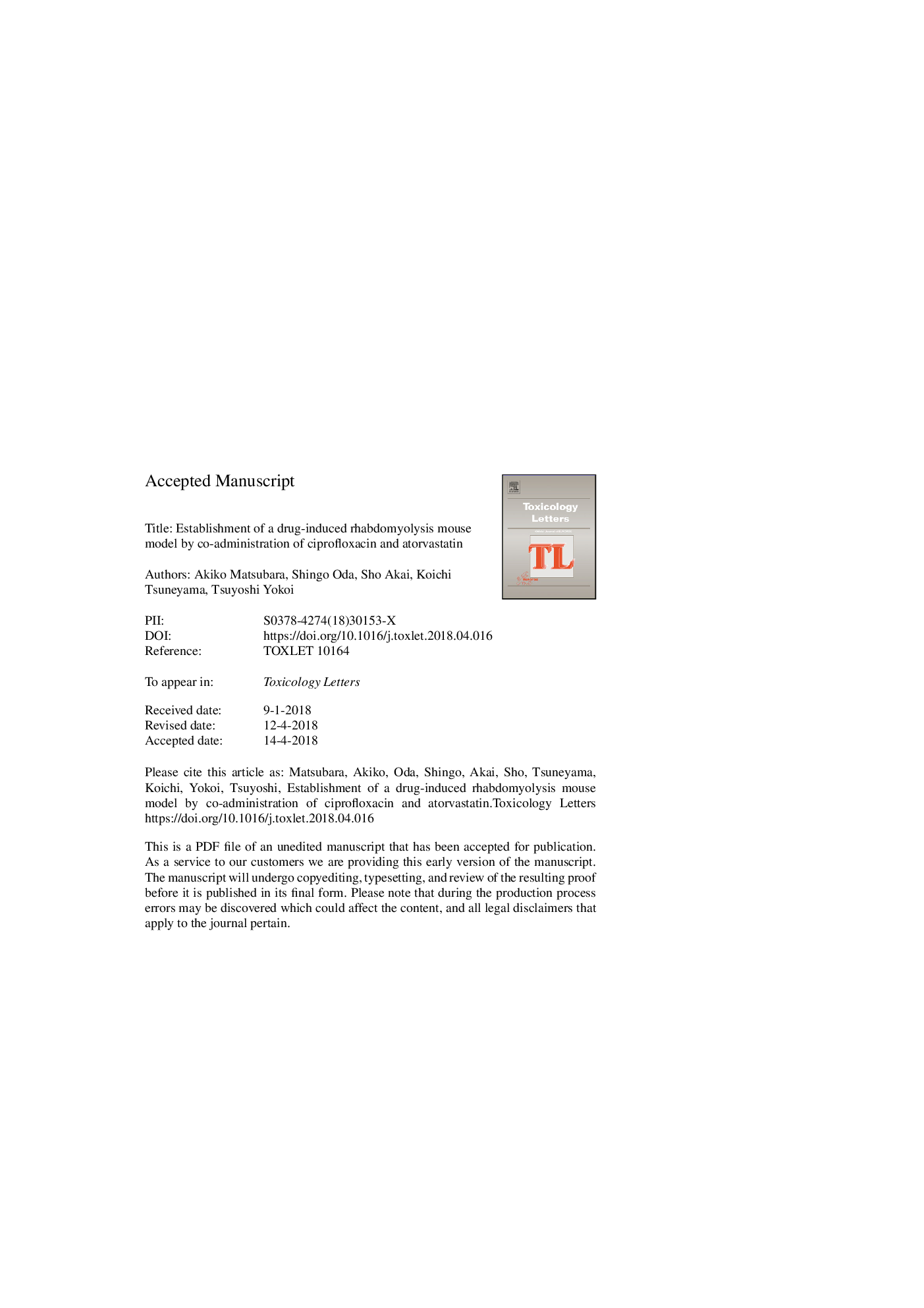| Article ID | Journal | Published Year | Pages | File Type |
|---|---|---|---|---|
| 8553290 | Toxicology Letters | 2018 | 42 Pages |
Abstract
Rhabdomyolysis is one of the serious side effects of ciprofloxacin (CPFX), a widely used antibacterial drug; and occasionally, acute kidney injury (AKI) occurs. Often, rhabdomyolysis has occurred in patients taking CPFX co-administered with statins. The purpose of this study is to establish a mouse model of drug-induced rhabdomyolysis by co-administration of CPFX and atorvastatin (ATV) and to clarify the mechanisms of its pathogenesis. C57BL/6J mice treated with L-buthionine-(S,R)-sulfoximine (BSO), a glutathione synthesis inhibitor, were orally administered with CPFX and ATV for 4â¯days. Plasma levels of creatinine phosphokinase (CPK) and aspartate aminotransferase (AST) were significantly increased in the CPFX and ATV-co-administered group. Histopathological examination of skeletal muscle observed degeneration in gastrocnemius muscle and an increased number of the satellite cells. Expressions of skeletal muscle-specific microRNA and mRNA in plasma and skeletal muscle, respectively, were significantly increased. The area under the curve (AUC) of plasma CPFX was significantly increased in the CPFX and ATV-co-administered group. Furthermore, cytoplasmic vacuolization and a positively myoglobin-stained region in kidney tissue and high content of myoglobin in urine were observed. These results indicated that AKI was induced by myoglobin that leaked from skeletal muscle. The established mouse model in the present study would be useful for predicting potential rhabdomyolysis risks in preclinical drug development.
Keywords
PTAHTNFCRECPFXHmgLCNSMVATVGSHNGALGAPDHCPKBSOALTH&El-buthionine-(S,R)-sulfoximineAtorvastatinArabidopsis thalianaASTAspartate aminotransferaseacute kidney injuryAlanine aminotransferaseAthperiodic acid-Schiffdrug-drug interactionsBUNcluster of differentiationreverse transcriptionSimvastatinCiprofloxacintumor necrosis factorneutrophil gelatinase-associated lipocalinLipocalinMyoglobinMicroRNAMiRNAPASblood urea nitrogenHematoxylin & Eosinheme oxygenasecreatininecreatinine phosphokinaseGlutathioneglyceraldehyde-3-phosphate dehydrogenase
Related Topics
Life Sciences
Environmental Science
Health, Toxicology and Mutagenesis
Authors
Akiko Matsubara, Shingo Oda, Sho Akai, Koichi Tsuneyama, Tsuyoshi Yokoi,
